Reworking your acquisition plan, beginning with your subscribe forms, will help you do a better job of connecting with customers and launching email conversations
We've been hearing many conflicting stories about how well EU marketers are preparing to handle all the many changes that GDPR will bring to their acquisition. So, we decided to see for ourselves.
Now the verdict is in: Some retailers will be ready to go on May 25, when GDPR goes into full effect. Some need to do a little tweaking. The rest? They'd better read our report: Preparing for GDPR - The State of Retail Email Subscribe Forms, which is applicable to all sectors, to see what they must do now to update their practices.
But doing this work does have a major upside: Reworking your acquisition plan, beginning with your subscribe forms, will help you do a better job of connecting with customers and launching email conversations that lead to a stronger email programme.
Why are subscribe forms important?
Email marketing is your brand's best opportunity to encourage customers to stay loyal and spend more. So, investing time and money in the subscription process makes business sense.
A healthy email list gives you a competitive advantage. It costs less than paid search or ads. You own the customer relationship and the platform. You can learn more about your customers as the relationship goes on. Plus, the ROI can't be beaten.
A recent MailChimp study found that not only did subscribers order at least 25% more frequently than non-subscribers but that they also spend at least 6% more than non-subscribers. In other words, they’re more valuable to you.
But all these benefits depend on having a subscribe form that invites and encourages them to opt-in to your email programme.
6 findings from the report
We found many marketers missed obvious opportunities to connect with customers and begin the conversation. Sometimes it was just a small percentage of marketers. At other times, more than half of the marketers missed the boat on a key opt-in opportunity.
When you download Preparing for GDPR: The State of Retail Email Subscribe Forms in 2018, (link) you'll get all our findings, plus our analysis, our best advice for creating better subscribe forms along with our take on GDPR and its potential effect on permission practices.
Here's a quick list of some key findings:
1. 87% of brands put the signup BELOW the fold, and one brand didn’t have a newsletter subscribe on the homepage (!)
Getting this form right is essential for everything that happens farther down the road in the customer's engagement and perceptions of your brand.
The majority of the 87% of subscribe forms below the fold ended up on the bottom of the homepage. Can you find this one?
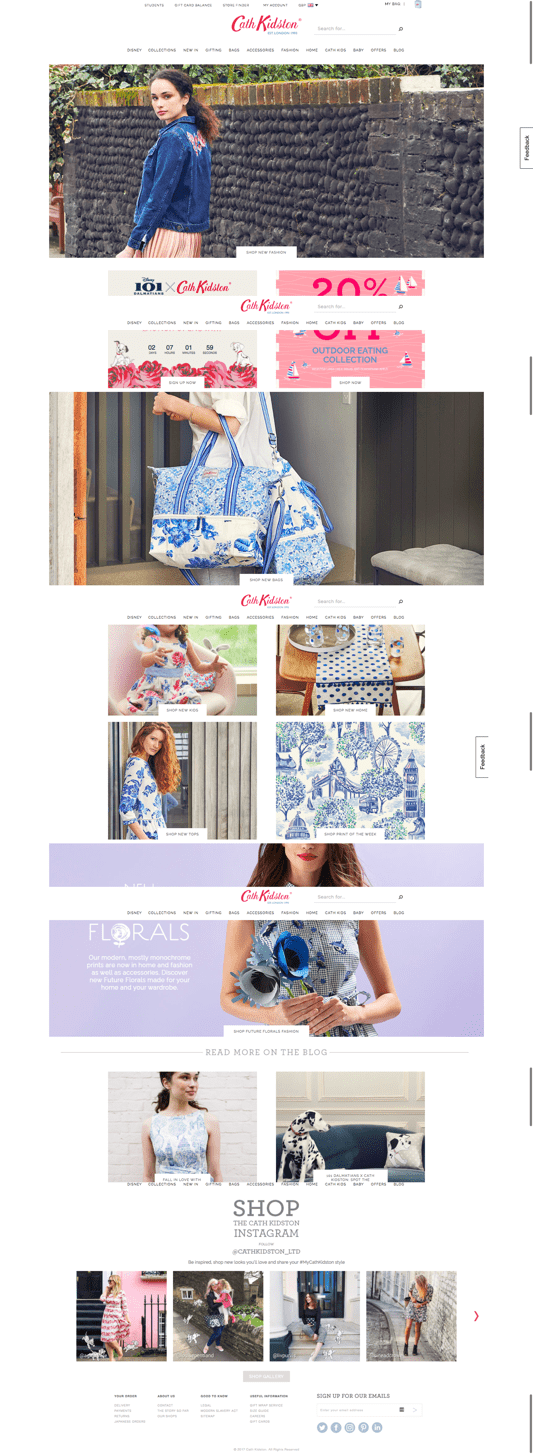
Turf wars between email, web and other marketing stakeholders can end up dictating where the subscribe form goes. Or, the page designer puts it anywhere it fits – anywhere but the prime visibility at the top of the page. My friend Chris Donald, over at Inbox Army asked 50 web designers where their preferred placement of a subscribe CTA was. 100% answered, within the footer, as in their opinion they thought they were ugly. They also said that only 1% of their clients would even discuss the form placement and 25% didn't even have one or did not request one.
In the case of retailers, the main reason is that the website team are not rewarded on list growth, but on conversions and as such prioritize this... Sad to say, these 87% of brands are most likely paying for their new visitor to come back again and again (until they finally buy) via PPC or other acquisition channels. Whereas, if they had placed the subscribe CTA above the fold they would be not only growing their list, reducing their acquisition costs per customer but as Mailchimp’s study found, increasing their revenue as well.
To combat this, pull out the numbers and show the difference in cost between acquiring a customer through a prominent form on a platform you own (your website) and acquiring them through paid search.
This brand did a lovely job of recognizing the value of email by positioning the subscribe form in prime homepage real estate:
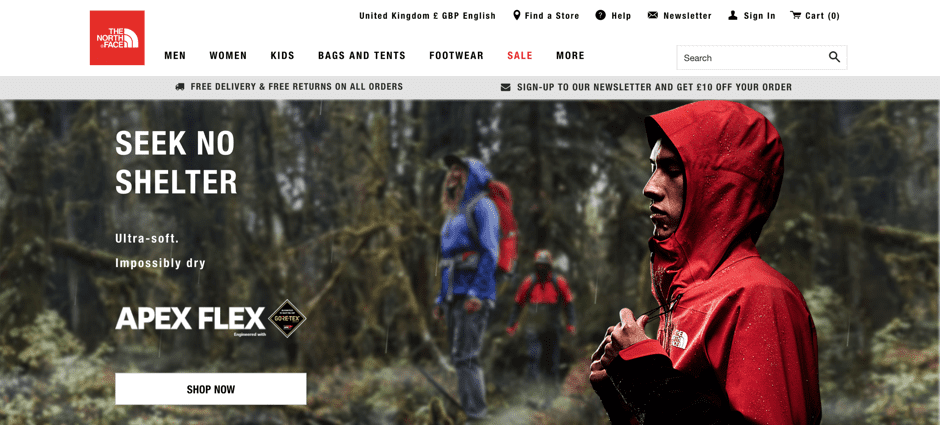
2. Only 46% of subscribe forms list clear benefits
It looks as if more than half of today's marketers forgot to answer that key question in every consumer's mind: "What's in it for me?"
Don't assume your customers will see the benefits for themselves. Above all, remember this: A transaction is taking place, even if no money has changed hands.
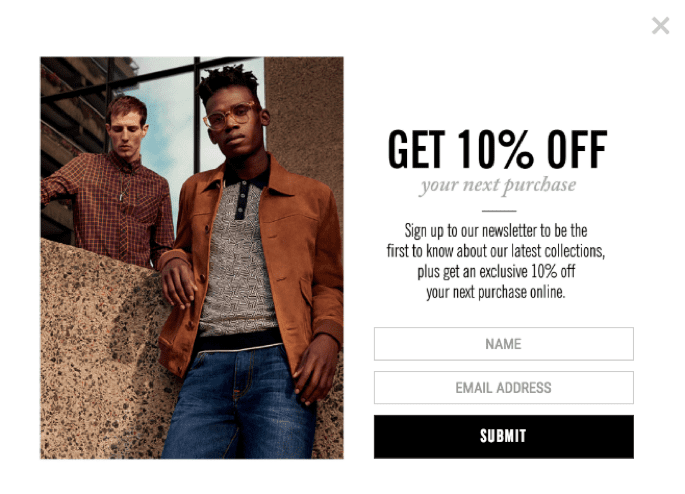 3. 62% of account registration forms allow customers to register using the same email address that they had just signed up with
3. 62% of account registration forms allow customers to register using the same email address that they had just signed up with
This form is separate from the subscribe form, but it can help or hurt the customer experience.
This is a good thing, right? Yes, but think about the other 38%, which don't let you use the same email address to open an account. What a confusing and poor customer experience!
Presumably, the technology would reject that move as a duplicate registration. Don't let that happen, though. Work with IT to fix the technology. Your customers' user experiences are more important.
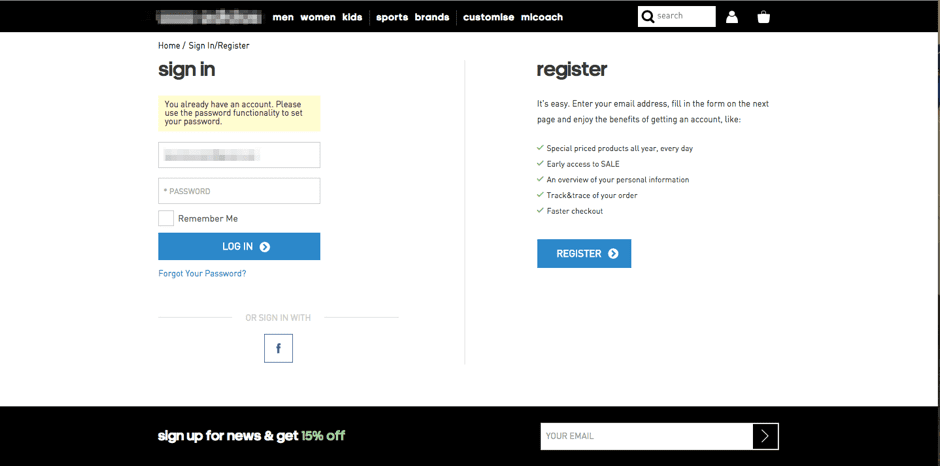
4. Most account registration forms have 5 to 7 mandatory fields
Many of your customers might use mobile devices to create accounts. Requiring many form fields can lead to abandonment and frustration. If you use account registration to drive email signups, those represent lost opportunities.
In my opinion details such as the billing address can be collected during their checkout, when they are highly motivated (and benefit from providing these details to you), rather than during the registration process when their intent to purchase isn’t as high.
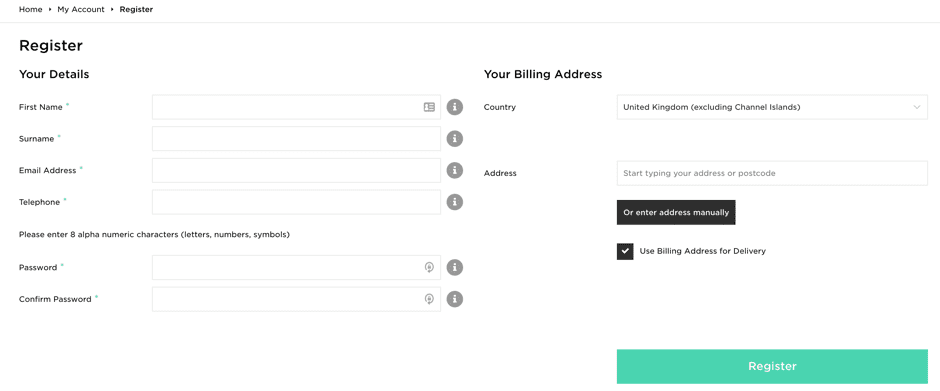
5. 49% of checkboxes promoting email opt-ins during account registration were pre-checked
Although U.S. email law still allows checked permission boxes on forms, they're out for UK and other EU email marketers under GDPR. Canada's Anti-Spam Law also prohibits pre-checked boxes or unchecked opt-out boxes.
Besides presenting our findings on email subscribe practices, our report also goes into some detail on acceptable email permission practices under GDPR, which affects marketers beyond the EU who have customers or subscribers in the EU.
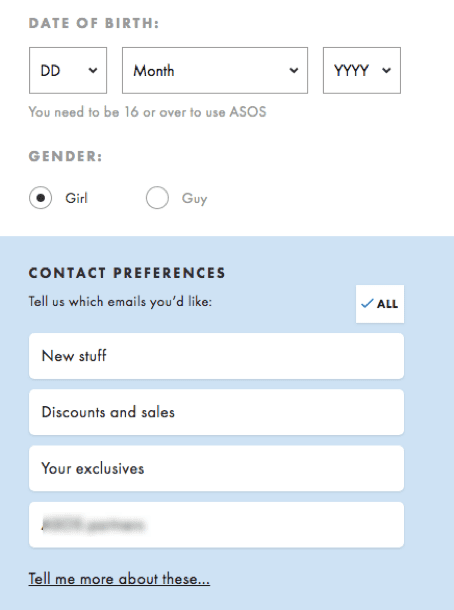 6. Only 43% of retailers sent an account registration confirmation email
6. Only 43% of retailers sent an account registration confirmation email
As with the post-subscription experience, what happens after customers register for accounts can either build engagement and loyalty or hurt them.
The registration-confirmation email serves the same purpose as an email confirmation or welcome message. Personalize it with the account holder's details, and link back to the account to make corrections or updates a breeze.
This email also gives you another opportunity to promote your email program to customers who created accounts but did not check the box to opt-in to your offers.
To be most effective, you should set it up using dynamic content, so that account-holders who have already subscribed to receive marketing emails see a different message. See how H&M include this as a CTA in its registration confirmation email.
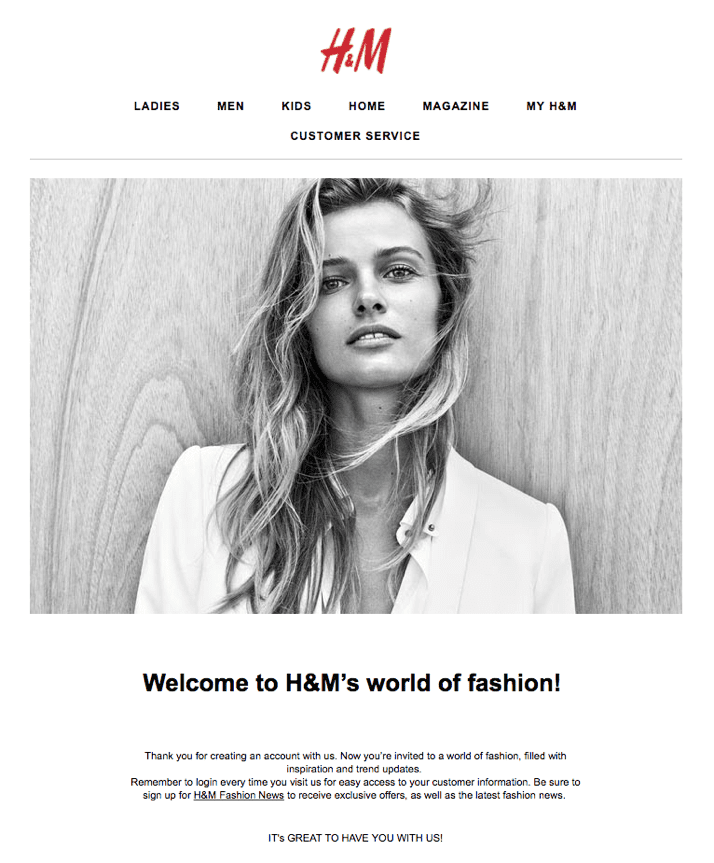
What sets subscribe-form winners apart?
Happily, our findings also helped us draw a clear and convincing picture of brands who are winning with their email subscribe forms.
We concentrated on this aspect of the process because it's so important. Once you master it, your list will grow like crazy with the subscribers who will drive the greatest value for your email program.
Here's what we found about these winning brands:
- They go above and beyond best practice, making creative use of technology.
- They write clear, jargon-free opt-in messaging.
- They sell the benefits of signing up to their lists.
- They make strong use of popovers.
- They have prominent forms everywhere that’s relevant.
Wrapping up
I hope you'll grab a copy of Holistic Email Marketing's Preparing for GDPR report because we've lots more surprising findings, background information that will help you make more informed decisions and a breakdown of acceptable email subscribing and permission practices under GDPR.
Now is a great time to review your own subscribe processes and practices and to identify and test needed improvements. You'll boost your email programme and comply with the law, all at the same time.



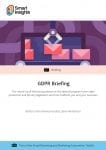


 3. 62% of account registration forms allow customers to register using the same email address that they had just signed up with
3. 62% of account registration forms allow customers to register using the same email address that they had just signed up with

 6. Only 43% of retailers sent an account registration confirmation email
6. Only 43% of retailers sent an account registration confirmation email




